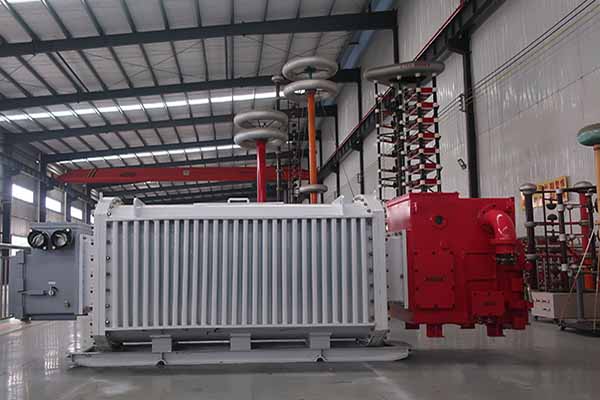Our factory tests are conducted according to IEC60076 standards to ensure the transformer meets the required specifications and operational performance.

mining transformer includes the following routine tests:
Regularly performing this test helps verify the mechanical stability and electrical continuity of transformer windings.
The voltage ratio test confirms that the transformer's voltage transformation aligns with its design specifications, while vector group verification ensures proper phase relationships.
These checks ensure that the transformer will perform reliably in a connected network, maintaining correct phase relationships and voltage ratios. The power supply capacity that the transformer can really load during load operation.
This test measures the losses and current drawn by the transformer when no load is connected, helping to evaluate core performance and design efficiency.
No-load tests are essential to optimize transformer efficiency and reduce core-related energy losses.
To measure load losses and impedance voltage. Gradually increase voltage on HV side until rated current flows. Keep LV side short-circuited. Apply rated current and measure load losses and impedance at145°C.
Load loss and impedance voltage tests assess the transformer's performance under typical operating conditions and ensure it can handle the expected load without excessive energy losses.
Withstand testing confirms the transformer's readiness for high-stress environments and ensures long-term durability of its insulation system.
7. Induced overvoltage withstand test
To check insulation integrity against overvoltage conditions, apply twice the rated voltage at higher frequency for 40 seconds.
To ensure no leak is present. Pressurize the transformer at least 50KPa at constant temperature and observe for leaks over 48 hours.
Mining transformer’s tank and accessories must be leak-proof to prevent the ingress of moisture and other contaminants, which could damage the insulation and core materials.
|
Test Parameter |
Test Pressure (kPa) |
Duration (Hours) |
Initial Pressure (kPa) |
Final Pressure (kPa) |
Pressure Drop (kPa) |
Observation (Leaks Detected) |
Acceptance Criteria |
Pass/Fail |
|
Tank |
80 |
48 |
80 |
80 |
0 |
No leaks |
No leaks |
Pass |
|
Bushing |
80 |
48 |
80 |
80 |
0 |
No leaks |
No leaks |
Pass |
Transformer testing is vital for ensuring the operational safety, reliability, and efficiency of these power assets. From winding resistance and insulation testing to more advanced partial discharge and thermal stability evaluations, each test provides critical data on the transformer's condition and suitability for service. By adhering to stringent testing value and offer test report.